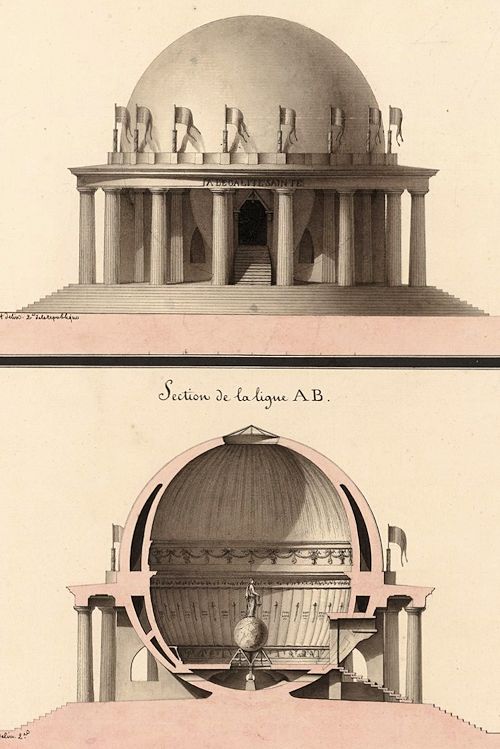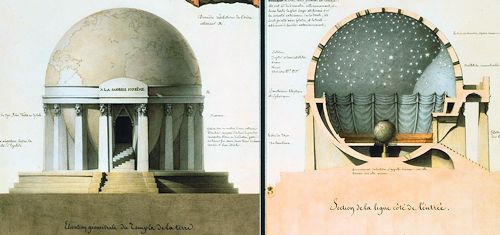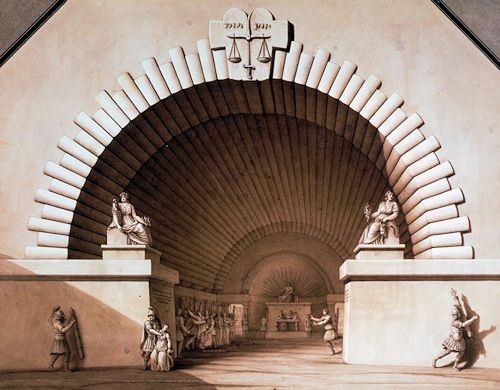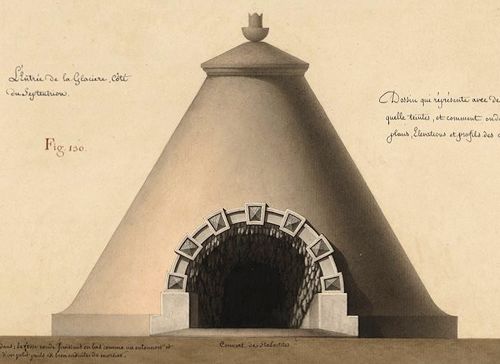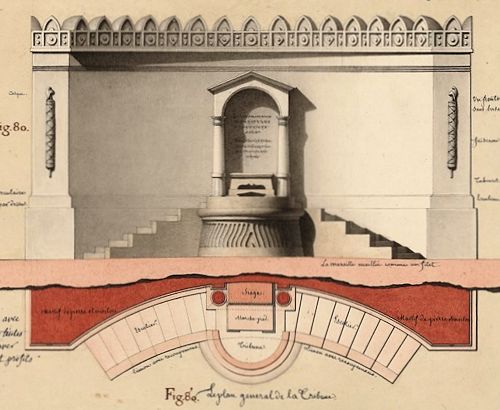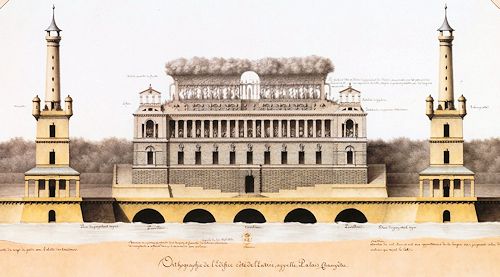LeDeuzzy, Q. |
I believe in multiple choice |
|
|
|
Struggle for Grandeur
| The equally dignified Temple de la Terre is similar in shape and artistic qualities. It bears above its entrance the legend A la Sagesse Suprême. Two notes on the verso manifest how tenaciously Lequeu strove for success and how easily he changed his political views. When he exhibited it in the year 11, he saw in it a means "pour rétablir . . . l'éternelle égalité." Much later he offered the design to the Minister of the Interior as a Chapel of St. Louis in the Père Lachaise cemetery, "parce qu'il est véritablement inutile . . . . . . s'accommoderont jamais avec leurs semblables." | The feeling of grandeur which strikes us in the spherical forms of the two temples shows with still greater intensity in a mighty vaulted Court Hall, dated an 3 de la République, which calls to mind the interior of Boullée's Library. Recalling the trivial symbols of many works about 1800 we become aware of Lequeu's superior ability to express the significance of the structure by strictly architectural means. |
|
|
|
The elementary forms have in themselves the quality of grandeur which agreed so well with the intentions of the revolutionary architects. Often the artists present the impressive basic forms with a minimum of decoration. The pure, primitive shapes suffice to sublimate both "great" structures like the Castle on the Sea and humble utilitarian buildings like the Ice House. The monumentality of all these designs may well have been derived from the same sense for greatness which inspired many of the leaders of the French Revolution. The architects, too, wished to build in a new and grand manner. | The Tribune of the Revolutionary Orators (Tribune des harangues), dated an 1, is great and plain with reticently applied classical features . . . . The contrast of the boldly advancing tribune and the curved wall behind it is grand. On the margin we read the revolutionary curse, to be engraved on the wall of the canopy in the center: "Périsse maudit de Dieu avec sa race, celui qui agira, parlera ou pensera contre la république." I do not know whether these strong words were originally those of the then revolutionary architect, or whether he just found them suitable. | Grandeur and fantastic beauty mark several large projects. One of these architectural dreams is called Palais champêtre. Trees and trellis clad with foliage mitigate the sternness of the stonework, similar to Boullée's thought to plant trees on the Cenotaph of Newton. |
www.quondam.com/90/9002l.htm | Quondam © 2020.01.06 |
